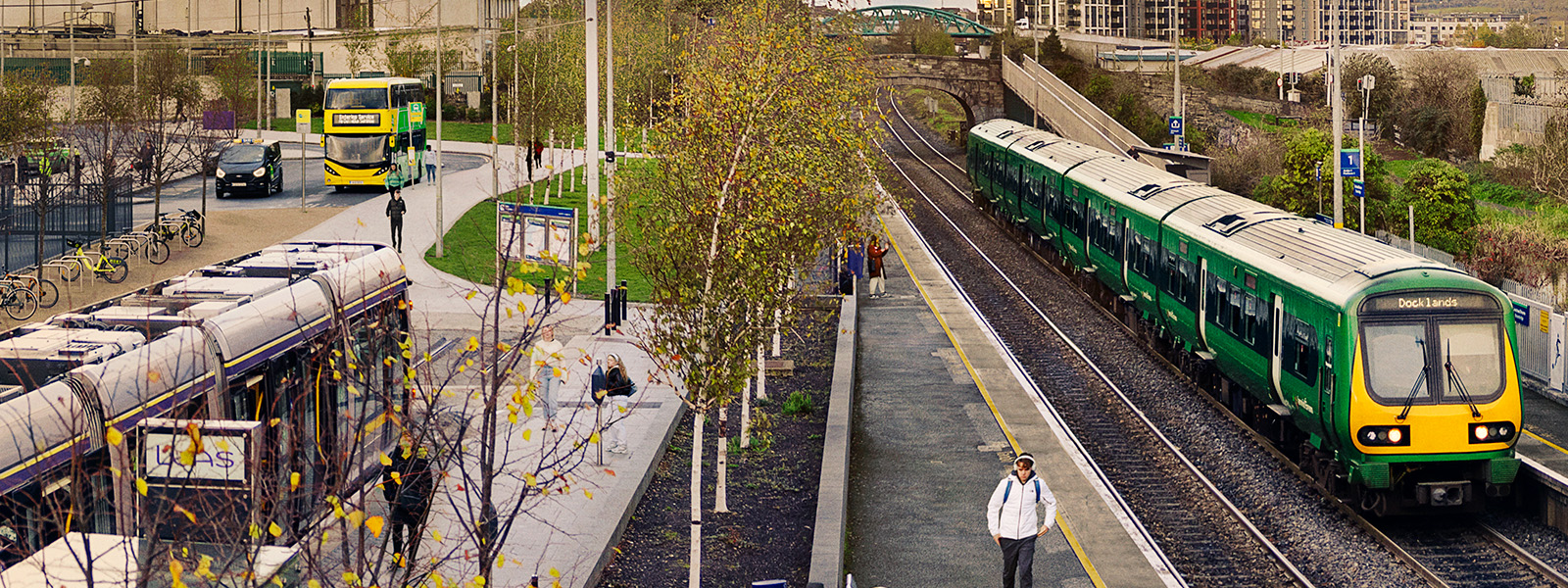View the fact sheet for phase 3 of the Core Bus Corridors project here
The National Transport Authority has today announced details of the third phase of the BusConnects Core Bus Corridor project with the unveiling of the final six of the sixteen routes that are earmarked for development.
The aim of BusConnects is to transform Dublin’s bus system, with the Core Bus Corridor project providing 230kms of dedicated bus lanes and 200kms of cycle lanes on sixteen of the busiest bus corridors in and out of the city centre. This project is fundamental to addressing the congestion issues in the Dublin region with the population due to grow by 25% by 2040, bringing it to almost 1.55m.
Bus services provide the main form of public transport across Dublin with 67% of public transport journeys each day made by bus. The level of commuting to work by bicycle has also increased by 43% since 2011 and the need for better and safer cycling facilities will be provided through the rollout of the Core Bus Corridor project.
The first phase of the public consultations commenced in November 2018 with the second phase started in January 2019. The latest public consultation for phase three is commencing today on the Emerging Preferred Routes for the following six corridors:
- Ballymun to the City Centre (Option A & B)
- Finglas to Phibsborough
- Bray to the City Centre
- UCD Ballsbridge to the City Centre
- Blackrock to Merrion
- Ringsend to the City Centre
All property owners potentially affected by today’s announcement have been notified by post with one-to-one meetings being offered in the coming weeks with those potentially impacted. The public consultation will run until the 30th April 2019.
On the six corridors announced today, annual passenger growth in Dublin Bus services has increased by 18% in the period 2015 to 2018. However, the millions of passenger journeys taking place on each of these corridors are facing increasing congestion with delays being frequently experienced by commuters.
In launching the public consultation, Anne Graham, CEO of the NTA said:
“Today marks the launch of the last in a three-step process of public consultation with the details of the Emerging Preferred Routes being unveiled for the final six Core Bus Corridors.
In recent days, the NTA has notified the up to 390 property owners along the final six routes who may be potentially affected by the Emerging Preferred Routes and offered one-to-one meetings to discuss the proposals and listen directly to their feedback. We would also encourage property owners to engage in the consultation process that is underway until the 30th April so we can look at the issues they wish to see addressed.
Throughout the development of this project, we are committed to deepening engagement with communities along each of the sixteen routes and the up to 1,470 property owners potentially impacted by the project. That is why we have been holding public information events in recent weeks and will hold similar such events for phase 3 in the next two months.
It has been encouraging to see the high level of engagement that we have witnessed as part of the consultation process. Through feedback and observations, we have already suggested a number of solutions including an alternative layout at Santry on the Swords to City Centre route.
At the NTA, we are eager to hear the concerns of all those potentially impacted and ensure they are updated at every step of the project. The Community Forums rolled out in recent weeks allow a continuous two-way dialogue with community leaders, residents’ associations, special interest groups and public representatives. The dates of the forums for phase three corridors will be finalised very shortly.
With the city due to grow by 25% and congestion one of the most significant challenges facing the Dublin region, the BusConnects Core Bus Corridor project is needed now more than ever. Through the development of continuous bus priority and segregated cycle lanes we can meet the growing demand for fast, reliable, punctual and convenient bus journeys in and out of the city centre, and safe cycling facilities for the growing numbers of cyclists.”
